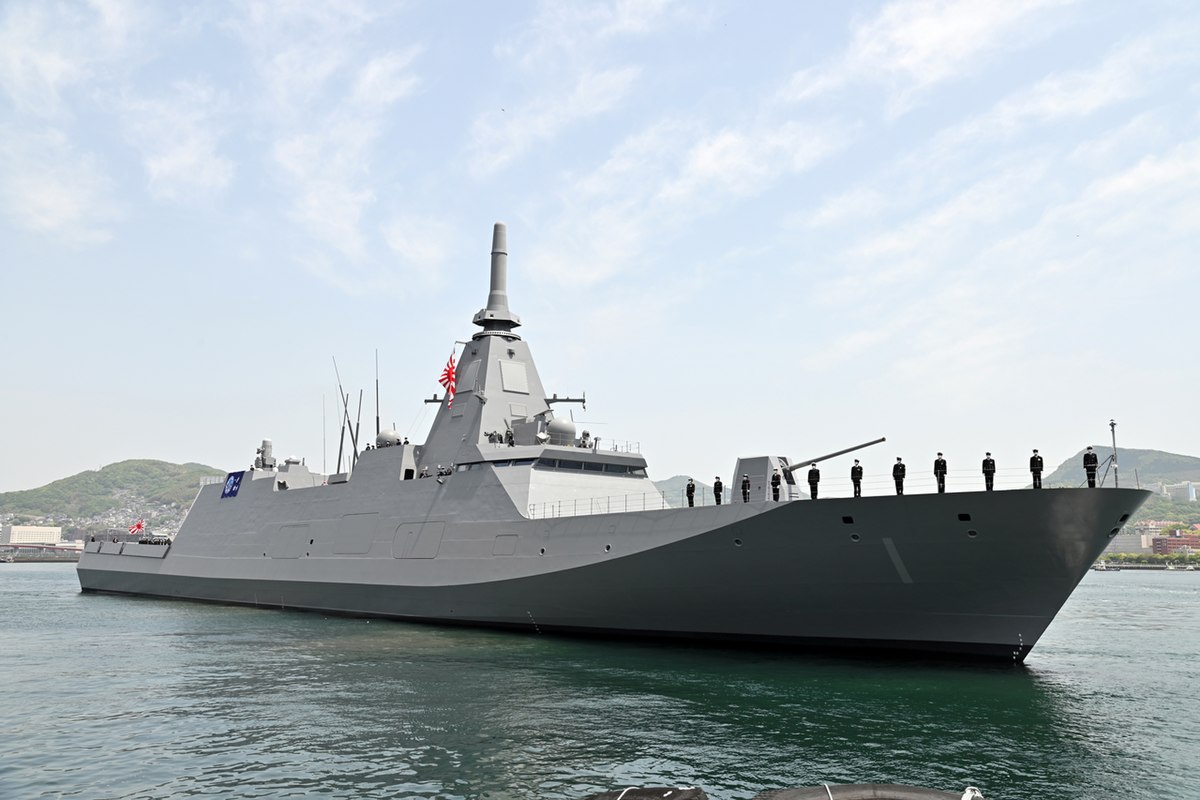
Australia and Japan Seal Largest Defence Deal for Advanced Warships

 :
| Updated On: 05-Aug-2025 @ 1:57 pm
:
| Updated On: 05-Aug-2025 @ 1:57 pmSHARE
Australia and Japan have finalized their largest-ever defence-industry agreement, marking a significant milestone in bilateral relations. This historic deal involves the production of 11 advanced Mogami-class stealth frigates for the Australian Navy, with a contract value of approximately AUD 10 billion (about USD 6.5 billion), according to Australia’s Minister for Defence, Richard Marles.
The Mogami-class frigates, built by Japan’s Mitsubishi Heavy Industries, are sophisticated stealth vessels equipped with long-range missile capabilities. These warships can operate over a range of up to 10,000 nautical miles (18,520 km), nearly doubling the operational range of Australia’s current Anzac-class frigates, which have a range of about 6,000 nautical miles (11,112 km). Additionally, the new ships will require fewer crew members, enhancing operational efficiency. The Australian Broadcasting Corporation (ABC) reported that the contract was the largest defence-industry agreement ever signed between Australia and Japan.
Set to enter service by 2030, the Mogami-class frigates represent a next-generation naval asset, designed with stealth technology to enhance Australia’s naval projection capabilities. Richard Marles emphasized the strategic importance of these vessels in projecting naval power, describing the deal as a “very significant moment” in the partnership between the two countries.
Australia’s Minister for Defence Industry, Pat Conroy, highlighted the substantial upgrade in firepower these frigates would bring, increasing missile capacity from 32 to 128 air defence missiles. This enhancement provides the Australian Navy with cutting-edge weaponry and combat systems essential for modern maritime security challenges.
Although the exact price tag for the vessels was not publicly detailed, it forms part of a broader AUD 55 billion (USD 35.5 billion) investment over the next decade aimed at expanding and modernizing the Navy’s surface combatant fleet. According to Reuters, the production plan involves building three frigates in Japan and the remaining eight in Australia, reflecting a significant industrial collaboration between the two nations.
This contract is notable for Japan as well, being the largest defence deal since it lifted its decades-long ban on military exports in 2014. Prior to this, Japan had only one other major defence export deal, supplying air defence radars to the Philippines. Japanese Defence Minister Gen Nakatani described the agreement as a “major step forward” in Japan’s defence cooperation efforts, emphasizing benefits such as enhanced joint operations and interoperability with both Australia and the United States. Nakatani underlined the deal’s significant security importance to Japan during a briefing in Tokyo.
Negotiations on the contract began this year, with the formal signing expected in 2026, according to officials from both countries.
Australia’s acquisition of these frigates aligns with a broader military restructuring announced in 2023, focusing heavily on developing long-range strike capabilities. This shift aims to enhance Australia’s ability to respond effectively to growing naval challenges in the Indo-Pacific region, particularly in light of China’s expanding maritime presence.
The country is ambitiously working to nearly double its fleet of major warships from 11 to 26 within the next ten years, underscoring its commitment to strengthening maritime security and maintaining strategic advantage in a complex geopolitical environment.
In summary, the Australia-Japan frigate deal not only symbolizes a deepening defence partnership but also represents a pivotal advancement in regional security, technological cooperation, and strategic naval capabilities for both nations as they navigate evolving global challenges.